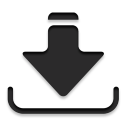
What is a Trading System?
A trading system is a structured methodology that defines when, how, and why to enter and exit trades in financial markets. It relies on a set of rules based on technical indicators,
price action, fundamental data, or quantitative models to make objective trading decisions. The main goal is to eliminate emotional bias, improve consistency, and increase the likelihood of profitable trades over time.
Why Use a Trading System?
✅ Eliminates emotional trading—follows rules, not gut feelings
✅ Backtestable—can be tested on historical data before live trading
✅ Improves consistency—reduces random decision-making
✅ Scalable—works across different markets and timeframes
Key Components of a Proper Trading System
-
Trend identification and confirmation across at least two timeframes
-
Complete order setup, including entry price, take profit, and stop loss
-
Money management subsystem with additional rules
-
Positive and proven past performance

Types of Trading Systems
-
Technical Analysis-Based Systems
Use charts, indicators (MACD, Bollinger Bands), and patterns (head & shoulders, flags). -Example: Buy when price breaks above the 50-day moving average with high volume.
-
Fundamental Analysis-Based Systems
Trade based on economic data, earnings reports, or interest rate decisions. -Example: Buy a currency when central banks signal rate hikes.
-
Algorithmic/Automated Systems
Use pre-programmed algorithms to execute trades without human intervention. -Example: High-frequency trading bots exploiting micro-price movements.
-
Arbitrage & Market-Neutral Systems
Exploit price discrepancies between markets or related assets. -Example: Buying a stock on one exchange while selling its futures contract on another.
-
Discretionary vs. Mechanical Systems
-
Discretionary: Allows trader judgment (e.g., Warren Buffett’s value investing).
-
Mechanical: Strictly follows predefined rules (e.g., trend-following systems).
More: » Compare Expert Advisors | » Compare Trading Platforms | » Compare Fx Brokers
Table: Compare Forex Trading Systems
|
TRADING SYSTEM
|
FEATURES
|
PLATFORM
|
OUTPUT
|
COST
|
|
Create custom trading systems |
■ EA BUILDER ■ Create custom indicators for free ■ No programming skills are required ■ Create custom Expert Advisors (EAs) ■ Trades Forex, Equities, Commodities, Bonds ■ Any Timeframe |
L MetaTrader4 | L MetaTrader5 | L TradeStation L Video Tutorials and PDF guides L Customer support
|
■ AUTO & MANUAL TRADING
■ Expert Advisors (EAs) ■ Custom Indicators: -SMS Alerts -Sound Alerts -Member's Area |
> 97 USD > Free for Creating Indicators
|
|
Signaling machine (6 pairs) |
■ 15-minute, 1-hour, and 4-hour timeframes ■ Six major Forex pairs ■ Fully Mechanical Trading - Automatic trade detection with precise trade specifications ■ Easy to Follow - Quick installation. Visual, audio, and email notifications |
L Video Tutorials and PDF guides L Customer support
|
■ MANUAL TRADING
■ Trading Signals: -Email Alerts -Sound Alerts -Visual Alerts -MT4 push notifications |
> 97 USD > Lifetime license
|
|
Forex Trend Scanner |
■ FOREX TRENDY ■ Easy-to-use Forex Scanner ■ 34 Forex Currency Pairs ■ Multiple Timeframes (nine)
|
L Trend and Breakout Scanner / Daily Signals L Can Fit any Trading Platform
|
■ MANUAL TRADING
■ SMS Alerts ■ Sound Alerts ■ Member's Area |
> 37 USD / 3-Months
|
|
MT4 plug-in for Advanced Money Management |
■ TRADER ON CHART ■ Plug-in Software for Advanced 1-Click Trading ■ Customized Settings (lot size, etc) ■ Automate Money Management with precision ■ Trailing stops simultaneously in many Forex pairs |
L MetaTrader4
|
■ MANUAL TRADING
■ 4 or 5 digits accounts ■ ECN/STP/DD brokers ■ Any financial instrument |
> 59 Euro > Onetime Fee |

Manual Trading Systems
A manual trading system is a method where traders analyze markets, identify trends, and execute trades based on a predefined set of rules—performed entirely by human decision-making. While the system may generate trading signals automatically (using indicators, chart patterns, or technical analysis tools), the final order placement requires human intervention.
Key Features of Manual Trading Systems:
✔ Rule-based strategy—follows specific criteria (e.g., moving average crossovers, support/resistance breaks) to identify trade setups
✔ Human execution—traders manually review signals before placing orders
✔ Flexibility—allows discretion, such as adjusting position sizes or skipping uncertain trades
✔ Learning curve—requires experience in technical and fundamental analysis
Example:
A trader uses Forex Trendy to scan for strong trends, receives an alert when EUR/USD breaks a key resistance level, then manually confirms the trade before execution.

Automated Trading Systems
An Automated Trading System (ATS), also known as algorithmic trading, is a computer program that scans markets, identifies trading opportunities, and executes orders without human involvement. It follows strict algorithms to enter, manage, and exit trades at high speed.
Key Features of Automated Trading Systems:
✔ No human intervention—orders are generated and executed automatically
✔ Speed & precision—eliminates emotional bias and reacts instantly to market conditions
✔ Backtested strategies—algorithms are tested on historical data before live trading
✔ 24/7 market monitoring—can trade continuously, even when the trader is away or asleep
Example:
A Forex ATS detects a bullish trend in GBP/USD based on moving averages and instantly opens a buy order, sets take-profit at a 2:1 risk-reward ratio, and trails the stop-loss—all without manual input.

Manual vs. Automated Trading: Key Differences
Here are some key differences between manual and automated trading systems:
|
Feature |
Manual Trading System | Automated Trading System |
|---|---|---|
|
Human-controlled | Fully automated |
|
Slower (human delay) | Instantaneous |
|
Possible (fear, greed) | Eliminated |
|
High (discretionary) | Fixed (rule-based) |
|
Beginners, discretionary traders | Scalpers, institutional traders |
■ Compare Fx Trading Systems
ForexAutomatic.com















